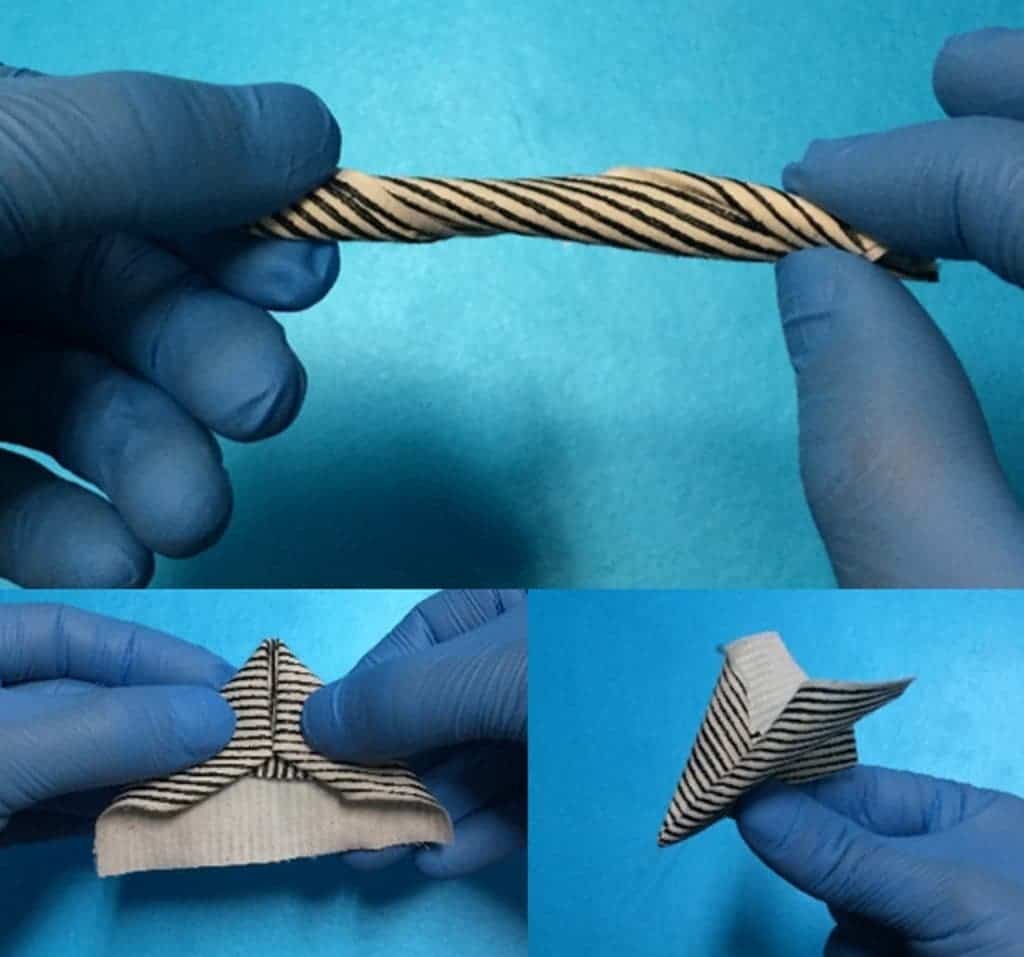Is there anything 3D printers can’t do?

Wearable electronics have drawn tremendous attention in recent years due to the potential they offer — but technical difficulties have made it hard to practically embed these systems into clothes. In a new paper, a team of Chinese researchers describe a technique to use 3D printers to weave electronics into clothes and enable them to harvest biomechanical energy from human motion.
We used a 3D printer equipped with a home-made coaxial nozzle to directly print fibers on textiles and demonstrated that it could be used for energy-management purposes,” says senior author Yingying Zhang, a professor in the Department of Chemistry at Tsinghua University. “We proposed a coaxial nozzle approach because single-axial nozzles allow only one ink to be printed at a time, thus greatly restricting the compositional diversity and the function designing of printed architectures.”
At the core of the technique are two “inks”: one is a carbon nanotube solution which served as a conductive core, and the second one consisted of silkworm silk, used for insulating the conductive fibers (this could also be replaced with other materials to ensure flexibility, biocompatibility, and waterproofness, researchers say). Two injection syringes filled with the inks were connected to the coaxial nozzle, which was fixed on the 3D printer. These syringes were used to draw different types of patterns (researchers tested this with Chinese characters meaning ‘printing’, the English word ‘silk’, and a picture of a pigeon.

This isn’t the first attempt at sewing electrical components into fabrics — but what makes this study significant is that it’s much quicker, versatile, and scalable. Using a 3D printer means you can build all sorts of versatile features and designs with relative ease. The nozzle is also compatible with existing 3D printers, which researchers hope will encourage more people to use this type of technology.
“We hope this work will inspire others to build other types of 3D printer nozzles that can generate designs with rich compositional and structural diversity and even to integrate multiple co-axial nozzles that can produce multifunctional E-textiles in one-step,” Zhang says. “Our long-term goal is to design flexible, wearable hybrid materials and electronics with unprecedented properties and, at the same time, develop new techniques for the practical production of smart wearable systems with integrated functions, such as sensing, actuating, communicating, and so on.”
Wearable technology can be used to monitor a user’s health, as well as physical activity, and record the data automatically.
Journal Reference: Matter, Zhang et al.: “Printable Smart Pattern for Multifunctional Energy-Management E-Textile” https:/






